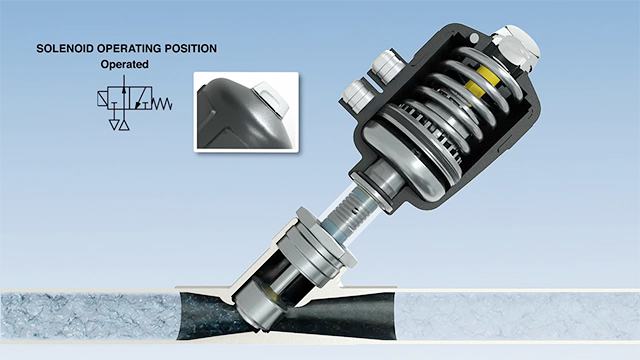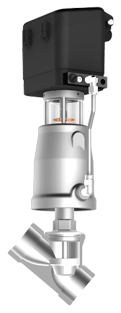- Gate valve
-
- DN1000 Extension stem double flange soft seal gate valveDIN F4 resilient seated gate valveDN450-1200 Resilient Seated Gate ValveDIN F5 resilient seated gate valveSocket connection soft seal gate valveUnderground cap soft seal gate valveBS5163 rising stem soft seal gate valveHard seal gate valveAPI slab Gate ValveStainless steel flange gate valveWafer knife gate valvePneumatic gate valveSoft seal gate valveExtension stem gate valveUL/FM fire protection groove ends gate valveRising stem forged steel gate valvecarbon steel gate valveStainless steel threaded gate valveDIN soft seal gate valveANSI soft sealing gate valve 200PSICast iron gate valveBS resilient seated gate valve
- Butterfly valve
-
- DN900 pneumatic triple eccentric hard seal butterfly valveD643H Triple Eccentric Butterfly ValveD343H Hard seal butterfly valveMulti standard EPDM seated butterfly valveSingle flange butterfly valveDN2000 Double eccentric butterfly valveFlange butterfly valveLug butterfly valveWafer butterfly valve with handleWorm gear operated butterfly valveWafer lined fluorine butterfly valveStainless steel wafer butterfly valveStainless steel flanged butterfly valveThree eccentric flange butterfly valvePneumatic flanged butterfly valvePneumatic wafer butterfly valveTriple eccentric butterfly valve wafer typeWafer butterfly valve ULC approvedInflatable seat butterfly valveHigh performance butterfly valveGrooved end butterfly valveElectric soft seal butterfly valveFlange fluorine lined butterfly valveHandle aluminum butterfly valveWorm Gear Aluminum Butterfly ValveFull PTFE lined butterfly valve wafer typeOne stem no-pin wafer butterfly valveMulti standard aluminum stem butterfly valveStainless Steel wafer Butterfly ValveAluminium handle operated lug butterfly valveLever Operated Flange Butterfly ValveButterfly valve stemButterfly valve discButterfly valve seat
- Ball valve
-
- DN1400 top-mounted eccentric semi-ball valveFlanged three-way ball valveFully welded ball valveNatural gas ball valveHigh platform flange ball valve1 PC ball valveFixed ball valvePTFE seat flanged ball valveMetal seat ball valveAPI 6D ball valve3 Piece ball valveFull Bore 3 way ball valve L-Port3 Way T-Port ball valve2PC Ball valve female thread stainless steel
- Globe Valve
-
- API Carbon Steel Globe ValveBellows Globe ValveStainless steel flange globe valveStainless steel thread S type globe valveStainless steel thread B type globe valveCast Steel Globe ValvePiston Globe ValveWCB Carbon Steel Globe Check Valveelectric motorized control stainless steel SS316 globe valveBrass Globe ValveCryogenic Globe valveHT200 Globe ValveThreaded Stainless Steel Globe ValveGG25 Globe ValveANSI API Cast Steel And Stainless Steel Globe valve
- Check valve
-
- Rubber seal check valveDN800 Slow closing check valveDN800 Rubber Disc Check ValveButterfly Buffering Check Valvecheck valve with counter weightSilent Check ValveWCB Swing check valveSwing Check ValveSingle Chip Check Valve H74WStainless Steel Wafer Check ValveSwing Start Check ValveFoot check valveAPI Swing Check ValveDIN Flange check valveSingle plate check valveLifting Check ValveBottom ValveHammer Diminish Noises Check ValveWafer Check ValveWafer dual plate check valve
- Control valve
-
- Static Balancing ValveCage Guided Sleeve Globe Control ValveDN1000 Piston Flow Regulating ValveDN1600 Electric Actuator Flow Regulating ValvePneumatic Flanged Butterfly ValvePneumatic Wafer Butterfly ValveAngle Seat ValvePneumatic gate valveElectric three-way control valveElectric sleeve control valve
- Water Meter
-
- Vertical Type Water MetersStainless steel threaded water meterPiston water meterPlastic water meterMore flow rotor dry water meterspiral vane flange water meterCI wotlman water meter with pulse outputLXCLG(R) Vertical removable element woltman cold (hot) water meterSingle flow rotor dry water meterPrepaid Token Water MeterElectromagnetic flowmeterRotary Piston Liquid Sealed Water MeterRotary Piston Liquid Sealed Water Meter
- Air valve
-
- Double ball exhaust valveDoubleair Air Valve SaudiDoubleair Air Valve Southeast AsiaDoubleair Air Valve South AmericaDouble Air ValveThreaded Air ValveSingle Air ValveTriple Functions Air ValveAutomatic Air Release ValveAutomatic release valveAutomatic exhaust valveComposite Exhaust Air ValveBrass exhaust valveDouble Ball Air Valve
- Pipe Repair & Coupling
-
- Flexible Multi-Function Pipe Coupling ZFJ-SSS Semi-Circle Pipe Repair Clamp SJW-HDuctile Iron Band Repair ClampStainless Steel Band Repair ClampDouble-Section Pipe Repair CouplingFolding Type Pipe RepairSingle-Section Multi-Function Pipe Coupling MF-SGear-Ring Type Multi-Function Pipe Coupling GR-SZBW Damping Corrugated Hose
- Dismantling Joint
-
- VSSJAFC(CC2F) Detachable Flange Transmission JointVSSJA-2(B2F) Double Flange Limited Expansion JointVSSJA-1(BF) Single Flange Limited Expansion JointVSSJA(AF) Flange Loose Expansion JointJGD-B Threaded Rubber JointZBW Damping Corrugated HoseKXT-S Flexible Dual-Spherical Rubber JointKXT Rubber Soft JointFlange Adaptor
The working principle of angle seat valve
An angle seat piston valve is a pneumatically-controlled valve with a piston actuator providing linear actuation to lift a seal off its seat. The seat is set at an angle to provide the maximum possible flow when unseated. Angle seat piston valves are particularly suited to applications where high temperatures and large flow rates are required, such as steam or water. When used in reverse some models of angle seat piston valve will eliminate water hammer when operated.
Angle seat valves are 2/2-way pneumatically actuated piston valves. The piston actuator provides linear motion that lifts the seal off its seat. Because the seat is positioned at an angle, there is minimal obstruction to flow in the open position, resulting in excellent flow and low pressure loss. They are used to regulate the flow of liquids, gases, steam, vacuum and even corrosive fluids.
They can also operate with high temperatures and highly viscous media, even at zero differential pressure. The robust design makes angle seat valves a popular choice for harsh applications and they have a very long cycle life.
They are therefore an excellent long-life alternative to ball valves. These valves are also a suitable replacement for solenoid valves, especially for contaminated viscous media where typical solenoid valves can fail.
They can be operated in single or double acting configurations, which affects their pressure rating. They can also be designed for manual operation or motorized operation.
The product is made of stainless steel casting and PTFE, which can be used in most gas, liquid, steam and corrosive occasions. It has a heat sink to protect the actuator and ensure a long valve life.
Single and double acting:
Single acting (pneumatic head is usually a hole);
Working principle:
According to the function of opening and closing by spring return, it is divided into normally open type and normally closed type.
Double acting (pneumatic head is usually two holes);
Working principle:
Air supply controls its switch. (According to customer requirements, double-acting plus spring reset can also be selected for more precise control);
Connection method of angle seat valve:
Pneumatic angle seat valves can be divided into:
① Threaded connection;
② Quick connection;
③ Flange connection;
④ Welded connection;
① With valve open or close position display.
② External pneumatic pilot can increase the service life and be maintenance-free.
③ There is a self-adjusting sealing gland between the overflow port and the slider, which can improve the sealing performance.
④ The angle seat structure of the valve body can achieve large flow (especially compared with ordinary globe valves), and the structure is compact and the response is fast.
Angle seat valve installation and maintenance:
Applicable safety regulations must be followed:
① The pipeline must be clean and free from pollution.
② Install as required, but it is best to make the actuator face up. Pay attention to the direction of flow.
③ Pay attention to aligning the connecting valve with the pipeline, and remove the actuator only when the user has special requirements.
④ Before opening or repairing the angle valve, cut off the fluid and control air source and reduce the pressure in the piping system.
These valves are used for millions of operating cycles in demanding applications such as steam, water and corrosive media. They are ideal for vacuum applications and can be used for rapid applications up to 1000 cycles per hour with an expected life in excess of 10 million cycles. They are used in many industries including food and beverage, chemical, oil and gas, water and wastewater, and more.
Typical applications where angle seat piston valves are used consists of but is not limited to:
1. Air drying equipment
2. Autoclave equipment
3. Autoclave food sterilisation
4. Automated cleaning machines
5. Beer making and brewery equipment
6. Braking system testing
7. Bottling and beverage dispensing
8. Chemical dosing equipment
9. Chemical processing
10. High pressure casting
11. Ink dispensing
12. Kerosene filling systems
13. Laundry equipment
14. Metal cleaning machines
15. Paint dispensing
16. Pollution control equipment
17. Process control systems
18. Steam boiler dump valves
19. Steam control equipment
20. Sterlizers
21. Textile drying and dyeing
22. Vacuum mixing
23. Wax powder manufacturing









